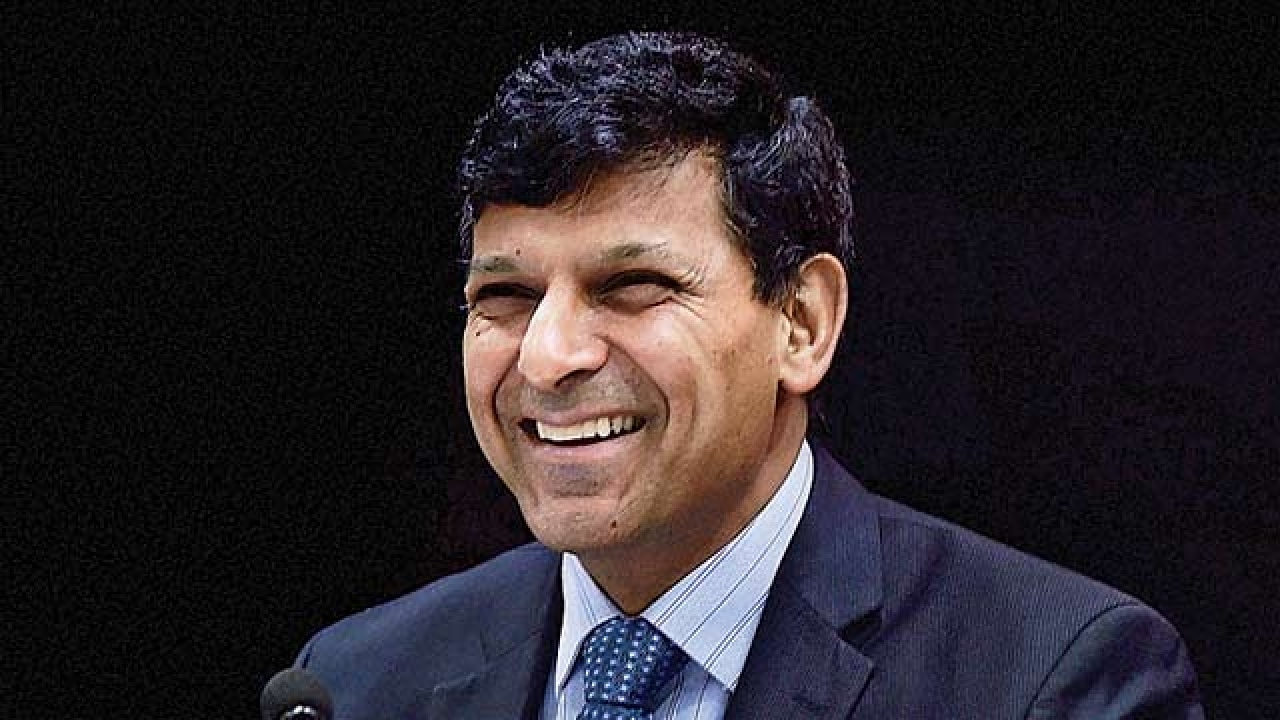
“Well, I think we’ve still to get to a place where we feel satisfied. We have this saying, ‘in the land of the blind, the one-eyed man is king.’ We’re a little bit that way. We feel things are turning to the point where we could achieve what we believe is our medium-run growth potential,” Reserve Bank of India (RBI) Governor Raghuram Rajan told Marketwatch in an interview in Washington D.C. on April 17.
Rajan has spoken often and eloquently about the need to avoid irrational exuberance. Prime Minister Narendra Modi’s government is trumpeting the fact that India’s economy will grow the fastest this year (the IMF predicts 7.5% GDP growth in 2016 and 2017), Rajan has not raced to slash interest rates as fast as Finance Minister Arun Jaitley would like him to. The one-eyed remark struck a raw nerve and Commerce Minister Nirmala Sitharaman led a spirited counter-attack, criticising Rajan for shooting his mouth off. Of course nobody remarked on the fact that those words were a tiny part of a lengthy dialogue on global growth prospects and the role of central banks.
Three days after his interview, Rajan cycled back a bit, apologising to blind people, but told graduating students at the National Institute of Bank Management in a lecture titled “Words Matter But So Does Intent” that he remained cautious about the future despite his ‘teachable moment’. “My intent was to signal that our outperformance was accentuated because world growth was weak, but we in India were still hungry for more growth,” Rajan said. India was still one of the world’s poorest large countries: “The sobering thought is we have a long way to go before we can claim we have arrived. As a central banker who has to be pragmatic, I cannot get euphoric if India is the fastest-growing large economy.”
That is the truth of course. Apart from the fact that India’s economy is on autopilot and not soaring; that bank credit to industry and agriculture is moribund; that consumption is not growing fast enough and jobs are not being created for the millions pouring into the workforce every year; and that two years of drought have crippled the farm sector, there is also the huge black cloud of non-performing assets or stressed bank loans, chiefly to the infrastructure sector. India is trundling along at a new Hindu rate of growth.
In fact, at April’s spring meetings of the IMF and the World Bank in Washington, Jaitley was happy to cite India as a beacon of hope but carefully skirted the subject of stressed bank balance sheets.
For a long time, as NPAs ballooned on their books, India’s state-owned banks chose to sweep most of the bad news under their carpets. Then, in April 2015, the RBI launched an Asset Quality Review to see if banks were taking steps to clean up their acts. The target date for completing the cleansing was March 2017.
The clean-up has triggered a torrent of terrible numbers from banks. On April 20, the RBI quietly told banks they could reclassify loans to about 20 of 150 highly-indebted borrowers, especially in relation to projects whose date of commencement of commercial operations had been delayed for reasons beyond the banks’ control. This will provide some window-dressing for banks’ annual reports for the year 2015/16, but the larger malady will linger.
The multi-billion dollar question, and one that is bound to put serious brakes on the India growth story, is how much money the government will have to spend to recapitalise banks that have bled white.
These facts are irrefutable, but Rajan went on to blame his news-hungry country for making his interview controversial when he spoke to the young new bankers in Pune.
“More generally, every word or phrase a public figure speaks is intensely wrung for meaning,” Rajan said ruefully.
By coincidence, I read an excerpt from ‘Who Moved My Interest Rate?’, a book soon to be published by Rajan’s predecessor Duvvuri Subbarao. It was about the ‘signal and the noise’. “One of the nice things about being a central bank governor is that the markets hang on every word you say, treating every syllable, nuance, and twitch of the face as a market cue,” Subbarao writes. “One of the stressful things about being a central bank governor is…” and wryly repeats those same words. He goes on to cite examples both from his own post-policy press conferences as well as from the Federal Reserve or the European Central Bank. Subbarao, who pioneered forward guidance on monetary policy on a quarterly basis during his 2008-2013 tenure, writes about the internal debates over the wording of the guidance and the misinterpretations that could and did occur.
Subbarao’s point is that if policymakers speak often and at length, they are bound to be misunderstood by markets. In the 1990s, I remember tearing my hair out in Tokyo when Reuters reporters phoned in news alerts that invariably went: “BOJ (Bank of Japan) says no change in policy stance” or “BOJ says will maintain cautious outlook” as the yen rose precipitously and Japan’s asset-price bubble burst.
Subbarao says he was both praised for being open and communicative and “Some analysts thought that I was not the uberconfident, alpha male central bank governor markets respect…”
Those words describe Raghuram Rajan to a T. At the end of his Marketwatch interview he’s asked: “I see your term is up in September.” Rajan says: “Absolutely”. Marketwatch: “Is it going to be extended?” Rajan: “It is a question that has to be answered.”
In the week since the interview appeared, the names of the claimants to Rajan’s throne have been bandied about. My wager is that the Modi government cannot find another central bank governor to match or surpass Rajan’s intellectual stature and economic cojones. He will get a second term, and we will hear more straight talk from him.
The author is an award-winning former editor of Reuters, Hindustan Times and Business Today